Wooden chest and photographs from Oceania
This chest was considered lost for over a century. In April 2021, it was found in the depot of our museum
Within the wood shavings lie glass negatives dating to around 1913. On one of the photographs: the painter Emil Nolde and his wife Ada Nolde
The photograph of the artist couple was likely taken on Manus Island in Papua New Guinea
A finding such as this triggers thousands of questions that hit the museum like a meteorite. Of course, the first question is: who was the owner of the chest?
-
Object data
- Event:
Date of production: between 1913 and 1922. Acquisition by the museum: around 1985 as a donation
- Origin:
Origin of photographs: Russia, Japan, Korea, China, Indonesia, Papua New Guinea
- Material:
Wood, iron, zinc sheet, lead sheeting, wood shavings, paper, cardboard, silver ring with gemstone, silver gelatine glass negatives, cellulose nitrate negatives
- Size:
W 50.5 cm, H 26.5 cm, D 34 cm
- Inventory Id:
2022.68:1
The long road to Hamburg
Faded inscriptions show that the wooden chest belonged to Alfred Leber (1881-1954). From research we know who this was: a German ophthalmologist and tropical physician who had led the "Medical-Demographic German New Guinea Expedition" of the Reichskolonialamt [German Imperial Colonial Office] in 1913/14. From this, it quickly becomes evident that the contents of the chest date back to colonial times. Literary sources also describe that the famous expressionist Emil Nolde (1867–1956) and his wife Ada Nolde accompanied the expedition as non-official members. The participants traveled by train and ship from Berlin via East Asia to various islands in Oceania, which were German colonies at the time.
.png?locale=en)
The chest was archived in the museum and given an inventory number. The photographs were then examined individually: Which people can be seen on them, which buildings can be identified? Which scenes and elements of everyday life, such as clothing or even food? Many detailed observations and generally known facts about the expedition make it possible to draw some conclusions. One thing is now certain: the photographs come from different periods (1913-1922) in Alfred Leber's life and were taken at different locations, one of which was the Island of Manus in Papua New Guinea. Indeed, well-known works of art by Emil Nolde depict scenes of Manus as a romantic "South Sea" myth. In the early 1920s, Leber took the chest to a family friend in Hamburg, whose relatives finally handed it over to the museum in the mid-1980s.
The term "South Sea" refers to several unclearly defined territories that are often perceived as exotic and even “paradisiacal”. It seems paradoxical that the term was (and still is) especially used for those regions in which Europeans perpetrated imperial violence. The photographs are an important counter-reflection to the idealising artworks. They tell of the colonial and, according to reports, often ruthless actions of the participants on location in order to fulfill the goals of the expedition.
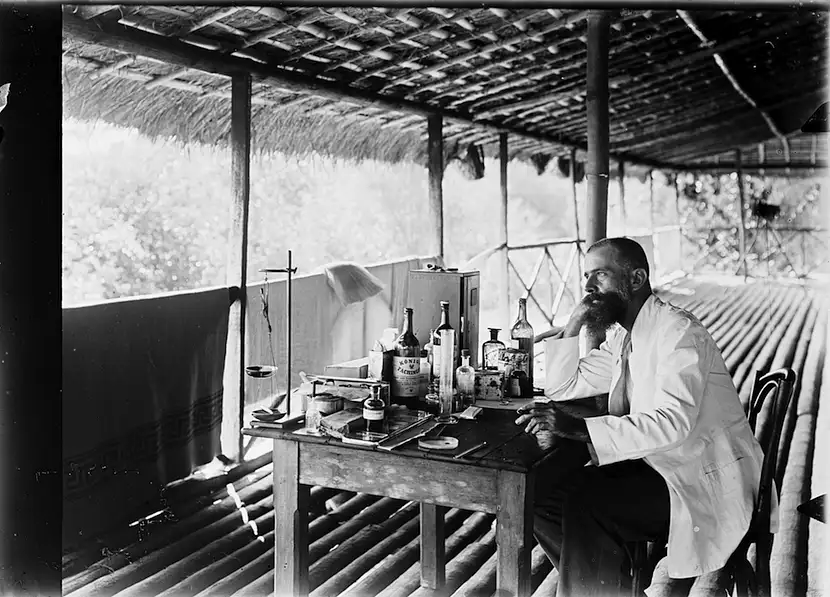
The photographs depict how medical examinations were carried out to increase colonial exploitation opportunities in the area. They show the colonial infrastructures in which the physicians and the Nolde couple lived in and profited from for almost a year.
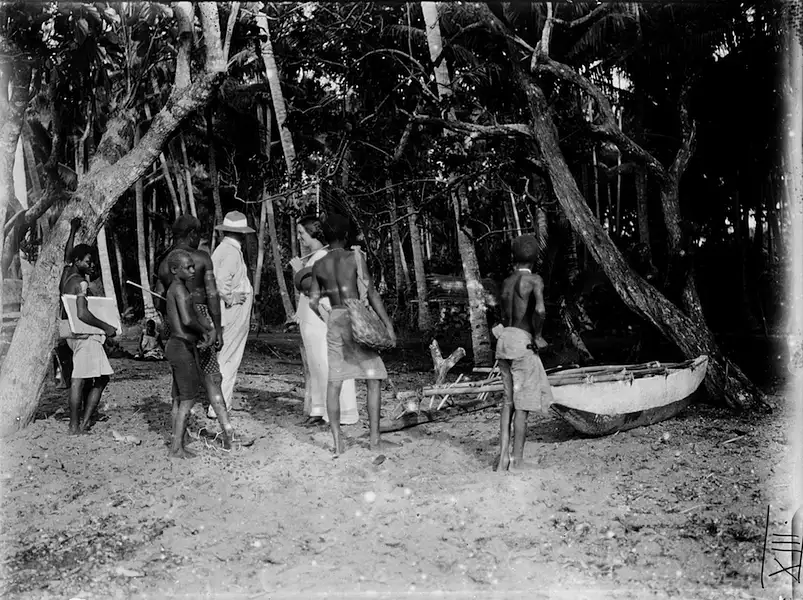
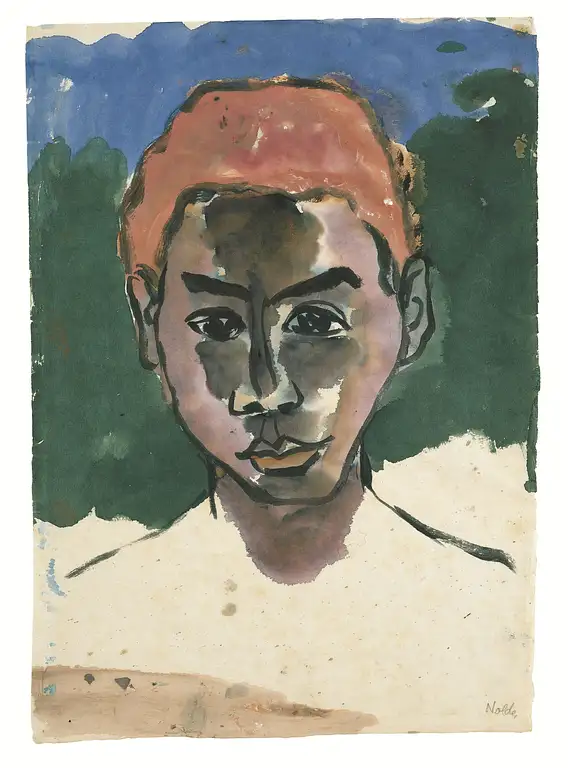
In the meantime, Emil Nolde's colonially influenced pictorial compositions - as well as those of other artists of the time - are being critically questioned in research and exhibitions. It is also a challenge for our museum to decide how we best make Alfred Leber's photographs accessible. The wish to show the raw historical truth without reproducing stereotypes from the time is still a challenging task.
The identities of the non-European people shown in the photographs still remain a mystery.Does anyone know their names?
The identities of the non-European people shown in the photographs still remain a mystery.
Spotlight 1
What does the wooden chest contain? 16 cans made of zinc sheet, 3 containers for glass plates, 4 packages of unexposed glass negatives of the brand Agfa. 358 exposed glass negatives with a format of 9 x 12 cm and 13 x 18 cm, as well as 7 cellulose nitrate negatives with a format of 6 x 9 cm. 1 silver ring with a gemstone covered with excelsior.
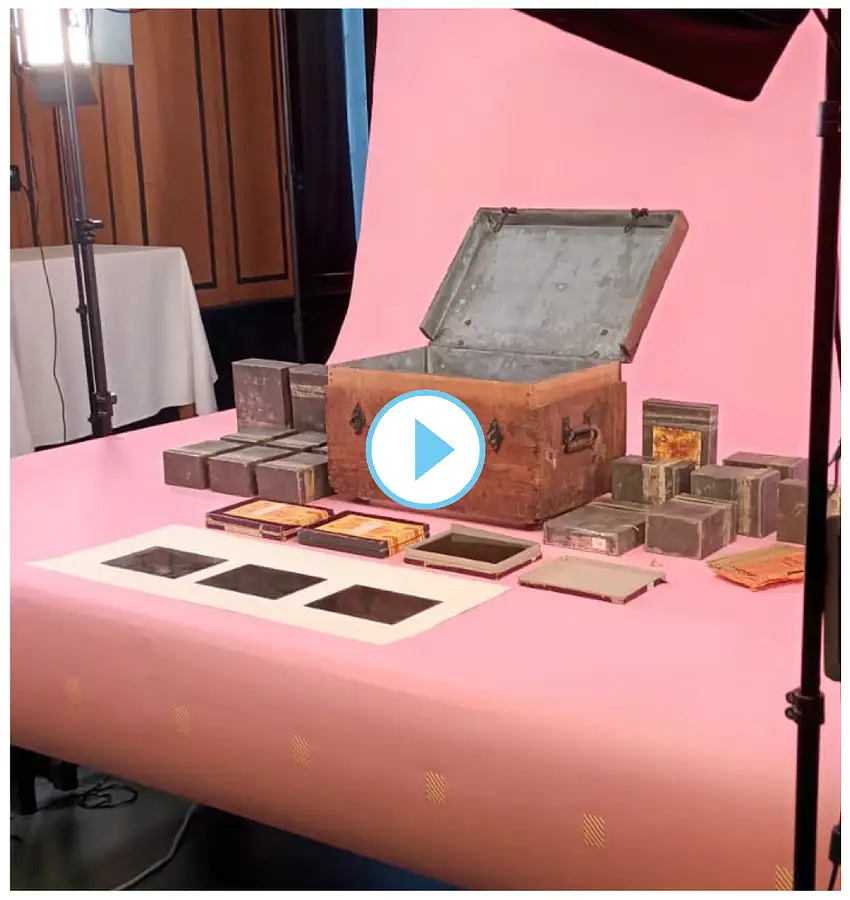
Spotlight 2
These are some photographs from the expedition. But the wooden chest also contains glass negatives taken by Alfred Leber in other places and at other times. What do these photographs tell us about his life as a physician in Indonesia between 1914 and 1922?
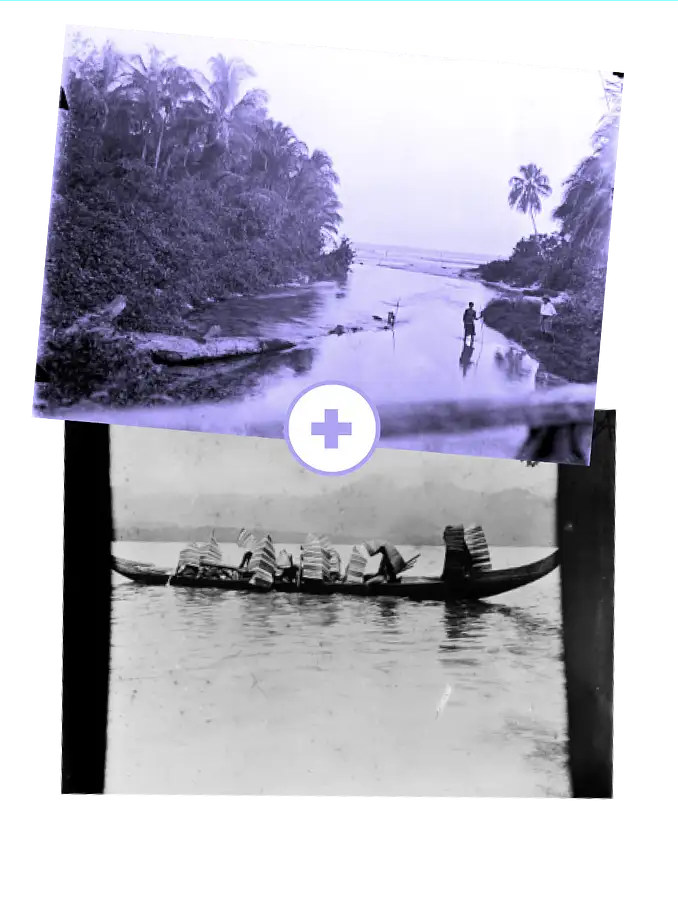
Spotlight 3
South Sea? Really? Emil Nolde and his relationship to colonialism
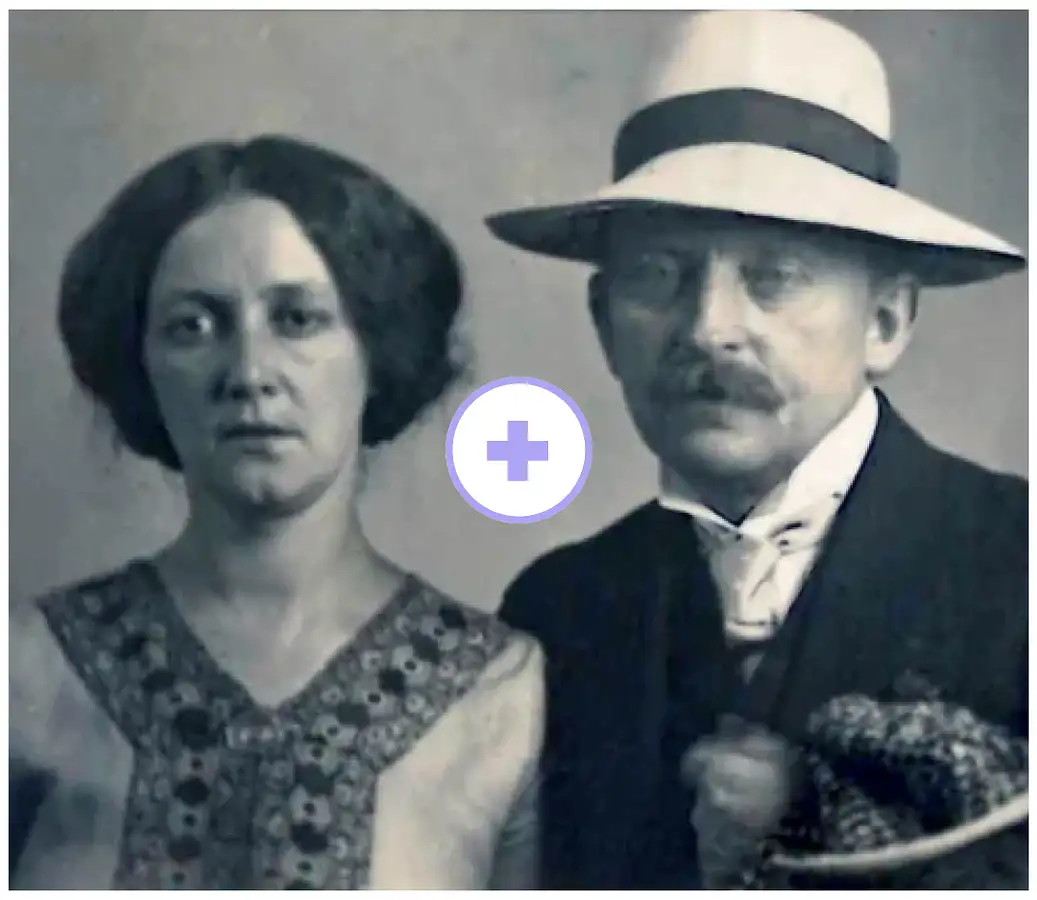
- Map (edited): Maximilian Dörrbecker (Chumwa), CC BY-SA 2.5, https://commons.wikimedia.org/w/index.php?curid=29780030, Reiseroute nach Manfred Reuther (Hrsg.): Emil Nolde - Die Südseereise, Dumont, Köln 2008
- Crossing of Manus, Map from 1914, drawing by E. Meyer: © Georg-August-Universität Göttingen
- Young man from Papua Newguinea (with auburn hair), 1914, watercolour and ink © Nolde Stiftung Seebüll
- Photography 1913: Emil and Ada Nolde, Archive Nolde Foundation Seebüll © Nolde Stiftung Seebüll
- Literature: Rainald Schmieg, "Alfred Leber: Begründer der deutschen Tropenophtalmologie", Düsseldorf 1992; Dorthe Agesen, Anna Vestergaard JØrgensen, Beatrice von Bormann, "Kirchner and Nolde, Expressionism. Colonialism", Hirmer, München 2021
- Thanks to the donor of the chest and his family, who do not wish to be named, as well as Christoph Schmidt / Lachslounge, Jeanette Kokott, Jamie Dau, Diana Gabler, Jan Neidhardt, Anahita Sadri Khanloo and Carl Kühl
- Texts: Ania Faas and Catharina Winzer
Load 3D model
tell me to Chest and Photographs from Oceania
Would you like to submit a comment or other contribution regarding this story?
You can write to us and/or upload pictures, films or sound files. Here´s the form, just click on the button below and be part of tell me!
tell me